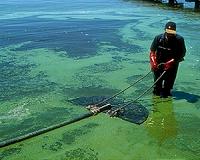| . |  |
. |
Washington DC (SPX) Feb 04, 2011 As farmers in Hungary ponder spring planting on hundreds of acres of farmland affected by last October's red mud disaster, scientists are reporting that high alkalinity is the main threat to a bountiful harvest, not toxic metals. In a study in the ACS journal Environmental Science and Technology, they also describe an inexpensive decontamination strategy using the mineral gypsum, an ingredient in plaster. Erik Smolders and colleagues note that a dam burst at a factory processing aluminum ore, flooding the surrounding land with more than 700,000 cubic yards of a byproduct termed red mud. At least 10 people died and hundreds were injured in Hungary's worst-ever environmental disaster. Red mud contains toxic metals like arsenic, chromium, cadmium and nickel. The mud also contains radioactive elements and is highly alkaline, caustic enough to burn skin and eyes. On the scale for measuring acidity or alkalinity, 7 is neutral, anything above 7 is alkaline and below is acid. Red mud is about one million times more alkaline than a neutral material. With up to 4 inches of red mud coating farmland, concerns arose about red mud's potential impact on the 2011 planting of corn, alfalfa, and other crops. With little scientific knowledge about red mud's effects on plant growth, much of the concern focused on toxic metals. The scientists' tests showed that plants in contaminated soil grew about 25 percent slower than crops grown in uncontaminated soil. The main culprit, however, appeared to be not toxic metals or radioactivity, but red mud's intense alkalinity and salt content. Adding gypsum to the red mud can reduce alkalinity and will accelerate the removal of the salts, the scientists add, recommending long-term monitoring of metals in the crops to remove any concerns with food chain contamination.
Share This Article With Planet Earth
Related Links American Chemical Society Our Polluted World and Cleaning It Up
 Using Mining By-Products To Reduce Algal Blooms
Using Mining By-Products To Reduce Algal BloomsCanberra, Australia (SPX) Feb 02, 2011 CSIRO research has shown that some mining by-products can be effective in preventing nutrients from entering river systems, thereby reducing the potential for algal blooms. A joint project between CSIRO and the Western Australian Department of Water investigated a range of mining industry by-product materials, which are currently unused, to determine whether they could instead be used to f ... read more |
|
| The content herein, unless otherwise known to be public domain, are Copyright 1995-2010 - SpaceDaily. AFP and UPI Wire Stories are copyright Agence France-Presse and United Press International. ESA Portal Reports are copyright European Space Agency. All NASA sourced material is public domain. Additional copyrights may apply in whole or part to other bona fide parties. Advertising does not imply endorsement,agreement or approval of any opinions, statements or information provided by SpaceDaily on any Web page published or hosted by SpaceDaily. Privacy Statement |